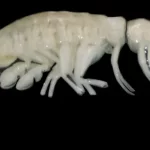
Groundbreaking Study Measures Quantum Entanglement Waves for the First Time: Implications and Challenges
August 25, 2023Pioneering Research on Quantum Entanglement Waves Unveiled: What It Means for Science and Its Impact on Bioinformatics
Unraveling the Mysteries of Quantum Mechanics
In a monumental scientific advance, researchers have for the first time captured real-space measurements of quantum entanglement waves. Experts from Aalto University and the University of Jyväskylä in Finland carried out the ground-breaking work. These scientists formulated a special type of artificial quantum magnet using cobalt-phthalocyanine molecules, featuring a unique quasiparticle known as the ‘triplon,’ which consists of entangled electrons.
Observing the Elusive
To make this complex observation, the team leveraged an advanced technique called scanning tunneling microscopy. This allowed them to see the individual molecules that made up their artificial quantum material. More importantly, they tracked how “singlet-triplet excitations” moved through this material. The researchers found that these entanglement waves could navigate across long spans even if the molecules weren’t directly adjacent, hinting at the possibility of creating scalable and durable quantum gadgets.
Why Does This Matter?
This discovery is a pivotal moment for quantum technologies, especially in the realms of quantum computing and secure communications. Until now, the ability to manage quantum entanglement was more of a theoretical concept. This study confirms that materials can be engineered to effectively utilize this quantum property, offering promising prospects for revolutionizing industries like healthcare and cybersecurity.
The Art of Real-Space Measurement
When we talk about “real-space measurements,” we are referring to directly measuring the wave functions of entangled particles within physical space. Earlier methods employed ‘weak values,’ but these couldn’t efficiently measure quantum states that were spatially separate. The current research sidesteps these obstacles, allowing for direct measurements in real-space.
What Are the Challenges?
While this is undoubtedly a milestone in quantum research, there are barriers to navigate:
- Complexity: The technicality involved in measuring entangled particles is high, demanding precise techniques and instrumentation.
- Nonlocality: The entangled particles might be spatially separate but are inherently linked, posing challenges in distance measurements.
- Material and Setup: The requirement for specialized materials like cobalt-phthalocyanine molecules can affect scalability.
- Understanding the Data: Quantum mechanics inherently contains probabilistic elements, making interpretation of results less than straightforward.
Despite these obstacles, the study serves as a seminal achievement, propelling our understanding of entangled particles and potential applications in quantum technology.
Implications for Bioinformatics
Bioinformatics integrates computer science, mathematics, and biology to decode intricate biological data. This area could greatly benefit from advancements in quantum technologies. For instance, new computational and statistical methods may emerge from better understanding quantum entanglement. Moreover, harnessing quantum properties could accelerate DNA sequencing technologies, a cornerstone of bioinformatics. Ongoing research could unveil novel solutions for both theoretical and practical challenges in the bioinformatics field.
Reference:
Drost R, Kezilebieke S, Lado J, Liljeroth P. Real-space imaging of dispersive triplon excitations in engineered quantum magnets. arXiv preprint arXiv:2301.09963. 2023 Jan 24.


















